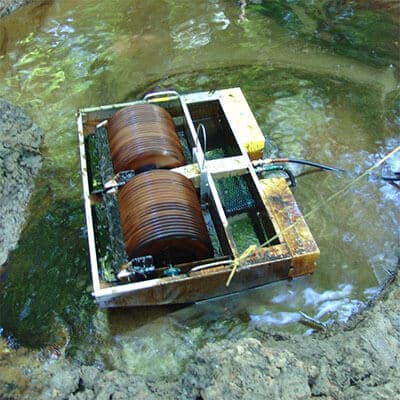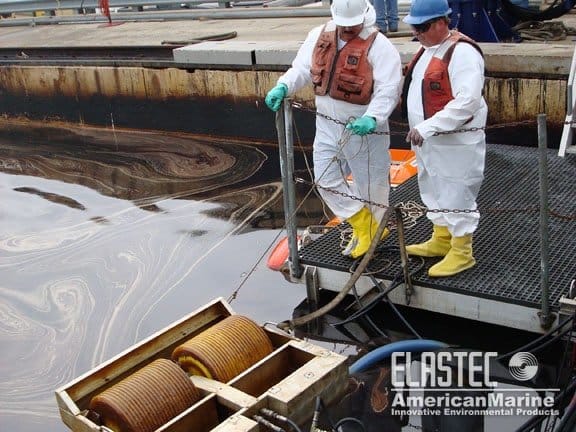Oil skimmers are vital tools in managing oil spills and maintaining industrial efficiency. They remove oil from water surfaces, preventing environmental harm. These devices are used in various settings, from open waters to industrial facilities. Their role in oil spill response is crucial for protecting ecosystems.
Different types of oil skimmers, like belt and drum skimmers, cater to specific needs. Each type offers unique advantages depending on the situation. Understanding their functionality helps in choosing the right skimmer for effective oil management. This knowledge is essential for industry professionals and environmentalists alike.
Explore how oil skimmers work and their importance in safeguarding our environment.
What Are Oil Skimmers and Why Are They Important?

Oil skimmers are devices specifically designed to remove oil from water surfaces. They serve to prevent environmental damage by efficiently skimming oil. This function is critical in managing both small and large oil spills effectively.
These skimmers play a significant role in safeguarding aquatic life by keeping oil from spreading further. In industrial environments, they ensure machinery operates smoothly and without unwanted oil interference. This reduces maintenance costs significantly.
The importance of oil skimmers can be seen across various applications. They are used in:
- Oil spill response
- Cooling tanks
- Industrial wastewater treatment
Additionally, oil skimmers are an eco-friendly solution. Their use helps organizations adhere to environmental regulations. Given their versatile functionality, oil skimmers are indispensable in both emergency and routine operations.
How Do Oil Skimmers Work? The Basic Principles
Oil skimmers operate by utilizing physical properties to separate oil from water. They rely on the lower density of oil, which causes it to float on water.
There are various methods skimmers use to collect oil. Common techniques include:
- Adhering oil to moving parts like drums, belts or disks
- Using floating hoses to trap oil
- Employing weir skimmers to skim oil off the surface
oiEach method depends on the skimmer’s design and the specific application. Skimmers can be fixed in place or portable, making them adaptable to different environments. They effectively reduce oil contamination in both industrial and environmental settings. The basic principles remain consistent, regardless of the skimmer type.
Types of Oil Skimmers: Choosing the Right Solution
Selecting an appropriate oil skimmer depends on several factors, including the type of oil, water conditions, and spill size. Different skimmers suit various applications, ensuring effective oil removal.
Key skimmer types include:
- Belt skimmers
- Disk skimmers
- Drum Oil SkimmersDrum skimmers
- Tube skimmers
Each type features unique characteristics and advantages. For instance, belt skimmers are known for their simplicity and reliability. Meanwhile, disk skimmers offer portability and are highly adaptable to different settings.
Drum skimmers demonstrate high-efficiency oil removal, making them ideal for a wide variety of oil applications. The tube skimmers are flexible, easily fitting into narrow spaces.
When choosing a skimmer, consider the environment where it will operate. Industrial settings might benefit more from fixed installations, while floating oil spills demand portable solutions. Additionally, consider the oil’s viscosity and the water’s temperature.
The versatility and adaptability of oil skimmers make them essential. Selecting the right one involves understanding specific needs and skimmer capabilities.
Belt, Disk, Drum, and Tube Skimmers
Belt, disk, drum, and tube skimmers are each suited to specific conditions. Their designs cater to different oil separation challenges. Belt skimmers function using a continuous belt that attracts oil, while disk skimmers use rotating disks for oil collection.
Drum skimmers are excellent for a wide variety of oil recovery, using a rotating drum surface to lift oil. Tube skimmers utilize a continuous tube that captures oil through adhesiveness.
Considerations when selecting these skimmers include:
- Oil thickness
- Water surface conditions
- Operating environment
Each skimmer type offers distinct advantages, contributing to effective oil management.
Floating and Coolant Oil Skimmers
Floating skimmers provide robust solutions for open water oil spills. They adapt to water movement, covering large areas efficiently.
Coolant oil skimmers, on the other hand, are designed for machine-based applications. They focus on removing tramp oil from coolant tanks, thus enhancing equipment life.
Key features of floating and coolant skimmers:
- Floating skimmers: adapt to water bodies
- Coolant skimmers: enhance machine maintenance
Both skimmers play crucial roles in different contexts, showcasing the breadth of oil skimming technology.
Key Applications: From Oil Spills to Industrial Maintenance
Oil skimmers serve various applications, making them vital tools in environmental and industrial contexts. Their versatility allows for broad usability across different areas.
In oil spill response, skimmers are indispensable. They quickly remove surface oil, mitigating environmental damage. This rapid action prevents oil from spreading, protecting marine life and ecosystems.
In industrial settings, skimmers enhance maintenance operations. They remove tramp oil from coolant systems, extending the life of machinery. By keeping equipment clean, they reduce maintenance costs and improve efficiency.
Key oil skimmer applications include:
- Oil spills in open water
- Oil spill in wastewater
- Industrial coolant systems
- Machinery maintenance
Oil skimmers thus play a critical role in both ecological and industrial preservation, illustrating their importance.
Factors Affecting Oil Skimmer Performance
The efficiency of oil skimmers relies on several key factors. Understanding these can optimize their use in diverse scenarios.
Performance can be influenced by:
- Oil viscosity and type
- Environmental conditions like wind and waves
- Skimmer design and technology
Each factor interacts with others, dictating overall skimmer effectiveness. Considering these will ensure successful oil removal in various conditions.
Benefits of Using Oil Skimmers
Utilizing oil skimmers offers numerous advantages. These devices are not only eco-friendly but also help reduce waste efficiently. They play an essential role in enhancing environmental sustainability.
Key benefits include:
- Recovering reusable oil
- Minimizing water pollution
- Cutting down cleanup costs
These benefits highlight the critical role of oil skimmers in effective oil management.
Maintenance, Safety, and Best Practices
Proper maintenance of oil skimmers ensures optimal performance and longevity. Regular checks and timely repairs prevent unexpected breakdowns. Safety is paramount in all operations involving oil skimming.
Key practices include:
- Routine inspection and cleaning
- Monitoring for wear and tear
- Training personnel on safety protocols
These steps promote efficient skimmer operation and safeguard both the environment and workers.
Innovations and the Future of Oil Skimming Technology
Advancements in oil skimming technology continue to enhance efficiency. New designs aim to handle diverse conditions and recover oil faster. Future innovations promise even greater environmental protection.
Oil skimmers are vital tools for reducing pollution. They protect water resources and support sustainable practices. Through innovation, they continue to play a crucial role in safeguarding the environment.
Connect With Us
Sign up for our newsletters to receive the latest news and product information from Elastec.



